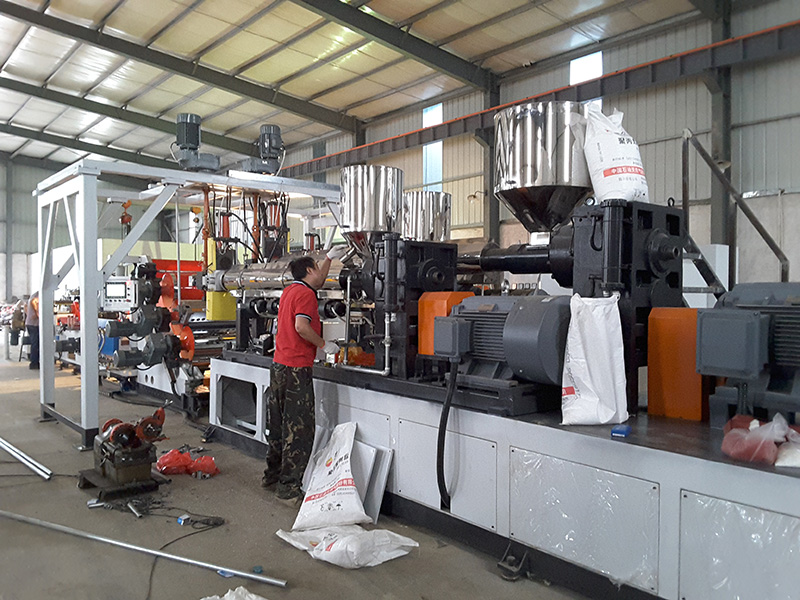Cast film is a kind of non-stretching, non-directional flat extrusion film produced by melt casting rapid heat of casting film machine. There are two ways of single-layer casting and multi-layer co-extrusion casting. Compared with blown film, it is characterized by slow production speed, low output, and excellent transparency, gloss and thickness uniformity of the polymer. But we don't know the importance of resin selection when cast film extruder makes cast film. What kind of resin should we choose?

(1) Selection of resin varieties
The selection of resin types is the basis for producing the desired cast film. The resin should be selected with the most similar properties to the modification purpose, so as to save the amount of additives added. Such as wear-resistant modification, the resin should first consider the choice of three small wear-resistant resins PA, POM, UHMWPE; again, such as uniform modification, the resin should first consider the choice of three small uniform resins PS, PMMA, PC.
(2) Selection of resin grades
There are many manufacturers who do not pay much attention to this when making cast films. The grades of the same resin are different, and the difference in performance is also very small. The grade with the closest performance to the modification purpose should be selected. For example, heat-resistant modified PP can be selected within the range of PP grades with a heat distortion temperature of 100 to 140 °C. We should choose a PP grade that is resistant to 140 °C, such as PP-4012 of Xiaohan Oil Chemical.
(3) Selection of resin fluidity
This step is relatively abstract, and you can only experience it after you try it, and there is no clear standard. The viscosity of various plasticizing materials in the formula should be close to ensure processing fluidity. For materials with very different viscosities, a transition material should be added to reduce the viscosity gradient. For example, PA6 is often added as a transition material in PA66 toughening and flame retardant formulations, and HDPE is often added as a transition material in PA6 toughening and flame retardant formulations.
(4) Selection of additives
The literal meaning of the additive is just as the name suggests, it is the catalyst that promotes the smooth shaping of the cast film. Such as PPS must not be added with lead and copper additives, PC must not use antimony trioxide, these can lead to depolymerization. In addition, the acidity and alkalinity of the auxiliary agent should be the same as the acidity and alkalinity of the resin, otherwise the reaction between the two will occur, and the consequences will be very serious.

Casting film machine can be used to produce PE, CPE, EVA and other plastic films, as well as transparent films, embossed films (patterns can be based on customer samples), light films, etc.
Casting film properties: never hard and brittle at low temperature, never sticky at 45°C high temperature, bad hand feeling, light in weight, non-toxic and non-irritating odor, high environmental pollution after use.
The film is widely used: it can be used as the base film of sanitary products, such as sanitary napkins, diapers; daily products, such as disposable gloves, shoe covers, shower caps, sleeves, aprons, surgical gowns, cleaning clothes, tablecloths, umbrellas, shower curtains, etc. With liner film, packaging film and usually perforated film base film and various film rolls.


